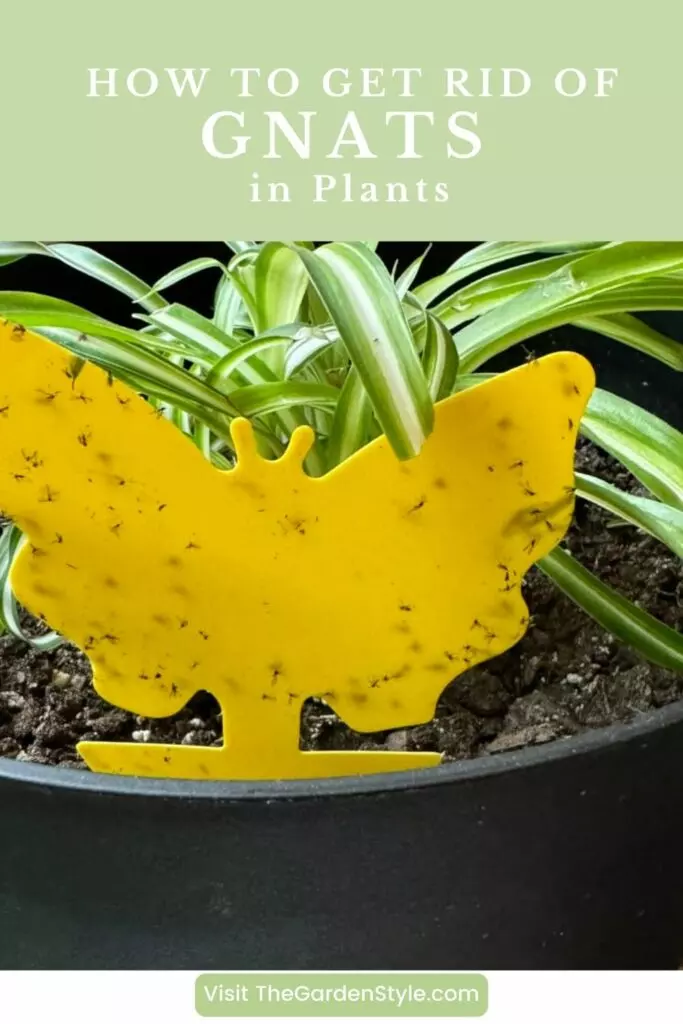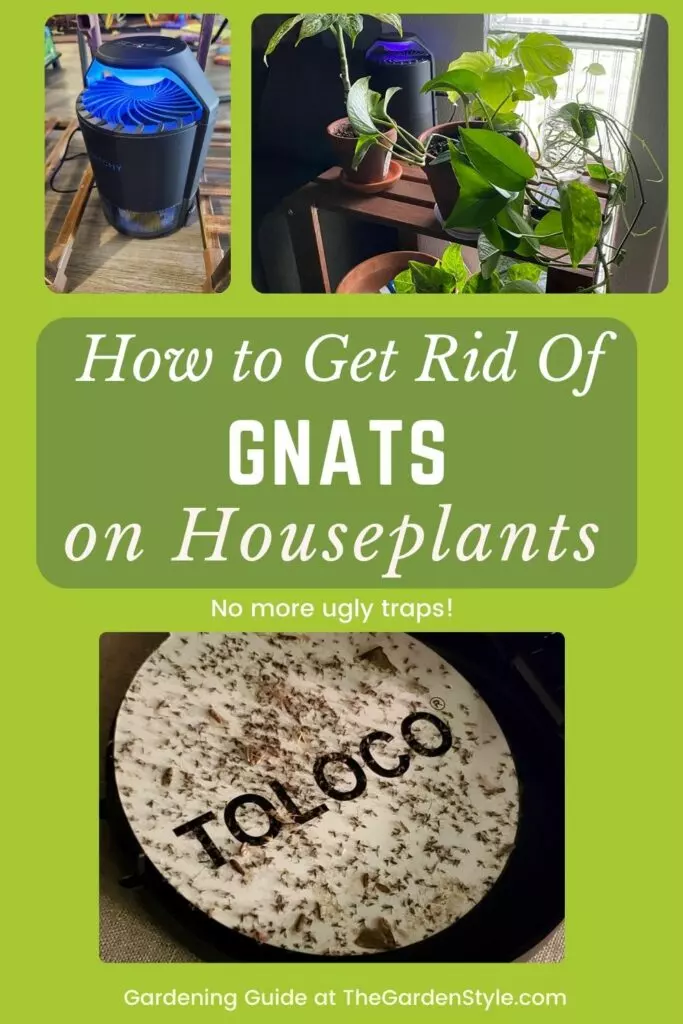If you notice small flying insects around your houseplants, they are probably fungus gnats. Don’t worry; removing and preventing fungus gnats on plants is very easy. Usually, you will observe even more of these gnats in plants after watering them. Learn how to get rid of gnats in plants.
Of course, in this article, you will also learn how to prevent gnats on plants so you will never have to deal with these irritating flying insects again. Many people confuse fungus gnats with fruit flies, but they are different, and we will see the differences between the two in this article.
Table of Contents
What Are Fungus Gnats?
Fungus gnats are very small, tiny, flying insects that have physical similarities to the common mosquito. They have slender, gray bodies like the common mosquito, are between 1/16″ and 1/8″ long, and have long, slender legs. A female fungus gnat can lay up to 200 eggs that will later develop into a larva, pupa, and finally into an adult fungus gnat.
When the eggs of the fungus gnat hatch, they will develop into tiny larvae that will feed on the fungi produced in the damp soil (hence the name fungus gnats). That is why you will easily observe many fungus gnats: they reproduce quickly and will always be near the pot where they were born. The life cycle of these insects is approximately 3 weeks.
Some people, when they see insects flying around their plants, think they are fruit flies, but they are different. Fruit flies are very similar to common flies but slightly smaller and, compared to fungus gnats, have shorter legs and larger heads. Here is an image so that you can see the differences between the fungus gnat and the fruit fly.
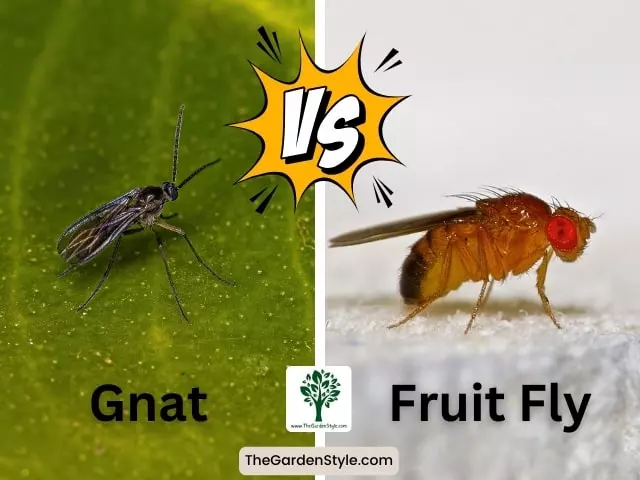
What Causes Gnats in Plants?
There can be several causes of gnats in plants, such as lighting and organic debris, but the main cause of gnats in plants is excess humidity. Heat and humidity are the optimal conditions for fungus gnats to develop. Overwatering is one of the first causes of fungus gnats. Rising temperatures and heat also help their proliferation.
Also, the fungus gnats are attracted by the organic debris in the pots because this is the food for the gnat larvae. Apart from being attracted to organic debris and moisture, they also like light, and that is why you can see the fungus gnats flying around light bulbs.
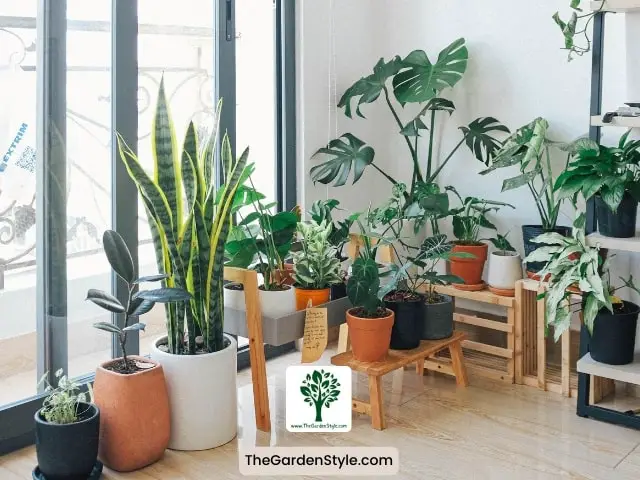
Signs of Fungus Gnats in Plants
If you have a fungus gnat problem, you’ll know—they’re easy to spot! These tiny flies, about 1/8 inch long, tend to stay close to infested plants. You’ll notice the adults walking on the soil or pot and flying in short, zig-zagging patterns low to the ground around plants. Gently stirring the top layer of soil may reveal their small, nearly transparent larvae up to 1/4 inch long.
How to Get Rid of Gnats in Plants Naturally
There are several ways to get rid of gnats in plants naturally. Any of these ways are valid to eliminate the gnats in plants. Choose the one that is easiest for you.
Make sure to eliminate all the gnats with these methods so you will never have them bothering your plants again. Continue reading to see all the natural ways to get rid of fungus gnats.
Let the Soil Dry
As mentioned above, the fungus gnats and their larvae love moisture, which is why you will let your plant water for a few days to let the soil dry out. As the soil dries out it will kill the larvae and their eggs, don’t worry your plant will survive a few days without being watered.
Bury a stick in the soil and check to see if the soil is moist. Only the first few inches (cm) of soil need to dry out. It is very important to have a well-drained substrate and that the pot has suitable drainage holes.
Add Diatomaceous Earth to the Pots
Diatomaceous earth is an excellent natural and organic way to get rid of gnats in plants. Diatoms are fossilized unicellular algae with a silica coating. This coating, upon contact with the insect, perforates its keratin layer, causing its death by dehydration.
Spread a little diatomaceous earth on the surface of the soil, and that will be enough to get rid of the gnats and their larvae. Diatomaceous earth provides micronutrients such as phosphorus, nitrogen, and potassium to the soil. Learn more about how to use diatomaceous earth in potted plants.
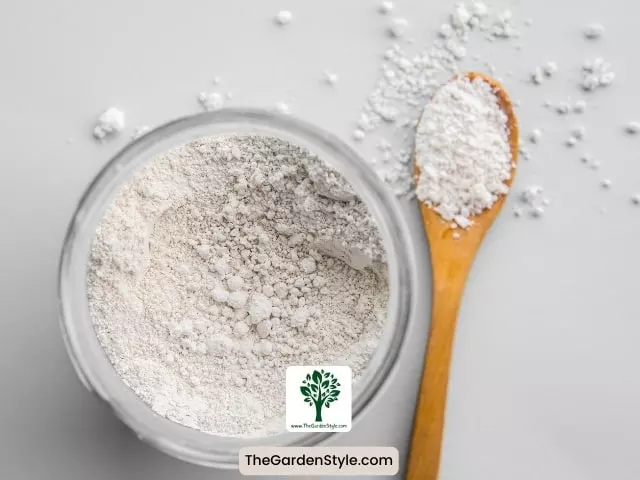
Bottom Watering Your Plants
Bottom watering plants is straightforward. You only need to have a dish deep enough to hold the water, and that also fits the submerged part of the pot.
This form of irrigation prevents the upper part of the substrate from getting wet so that only the bottom of the soil is moistened and absorbed by the roots.
Use Sticky Fly Traps
Sticky fly traps are an excellent way to get rid of gnats in plants. This way, you can trap the adult gnats, and without adults, they will not reproduce. I recommend yellow sticky fly traps; the yellow color attracts more gnats.
You could combine sticky fly traps to catch the adult gnats and then spread some diatomaceous earth to remove the larvae from the soil.
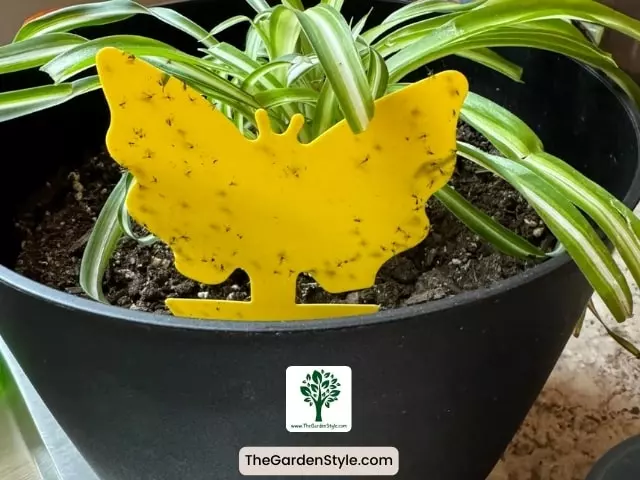
Sprinkle Cinnamon in the Soil
The use of cinnamon in plants is recommended because it is a natural fungicide. An advantage of cinnamon is that it is always available at home or can be easily bought in any store, and it is inexpensive.
Sprinkle a little cinnamon on the surface of the soil in the same way you would sprinkle diatomaceous earth. This will eliminate the molds and also the gnat larvae that feed on the fungus.
Automatic Indoor Insect Trap
There are many automatic traps for indoor insects; most of them have a UV light that attracts the insects, such as the gnat, and then a fan sucks it out. After being sucked in, the insect is trapped inside a sticker.
It is very similar to sticky fly traps but without the need to put the traps everywhere in the house. It is also very quiet and works for a wide variety of insects. I must admit I have one at home, but I use it for common mosquitos.
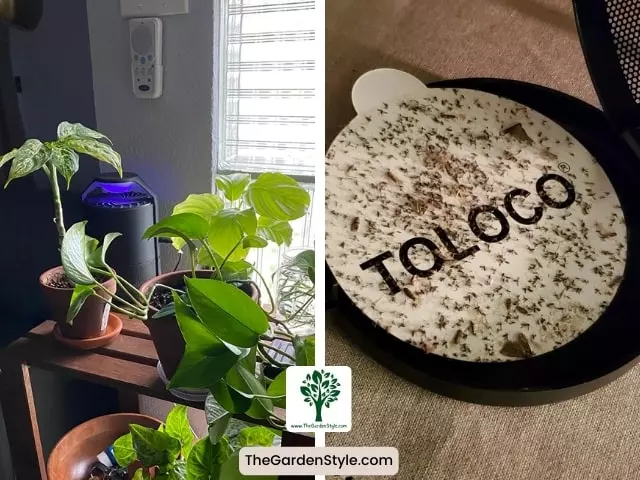
- Triple trapping power: a UV light, powerful fan, and sticky glue board combine to effectively get rid of fruit flies, gnats, mosquitoes, and other small bugs (not effective on house flies). Simply turn on/off when needed.
Water With Mosquito Dunks
Mosquito Dunks is a product containing a bacterium called Bacillus thuringiensis israelensis, also known as BTI, which naturally eliminates gnat larvae without affecting plants or other animals.
Just add the product to the water in your watering can and water the plants. It will kill gnat larvae for up to 30 days. A scientific study found that using the bacterium Bacillus thuringiensis israelensis in the substrate had positive results against gnat larvae. This is a very effective and environmentally friendly way to get rid of gnats in plants.
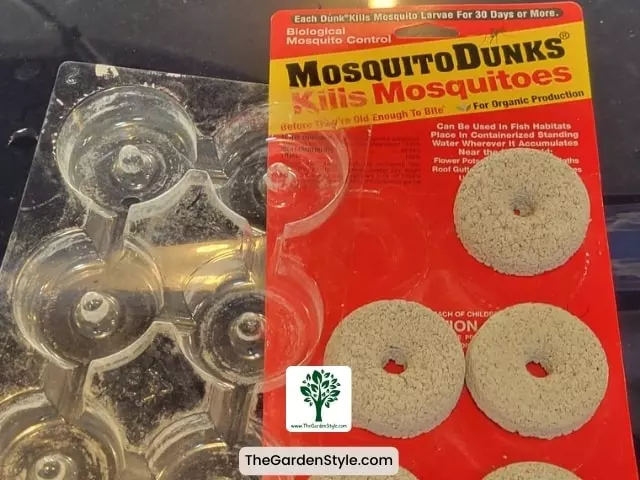
- Kills Mosquito Larvae Before They’re Old Enough To Bite
- Organic Lasts Up To 30 Days
- Each Dunk covers 100 square feet of surface area
Hydrogen Peroxide Mix
Dilute 3% hydrogen peroxide in 4 parts of water and water your plant. Mixing in this ratio will eliminate all gnat larvae and also aerate the soil. The important thing is to use hydrogen peroxide at 3% and not in higher concentrations because it could damage the roots of the plant. This is also an excellent way to get rid of the gnats on plants, as we all have hydrogen peroxide at home.
Neem Oil Mix
Neem oil is another natural and organic product used to eliminate different pests. You should use neem oil to eliminate or remove the gnats from the plants. We recommend our article about how to mix neem oil for plants so that you can prepare it correctly.
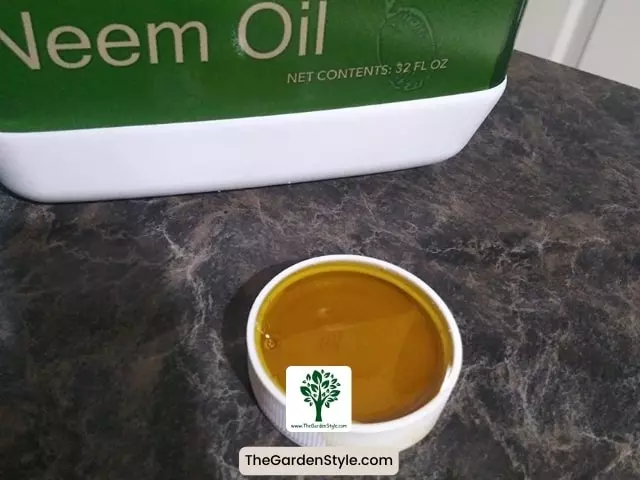
How to Prevent Gnats in Plants
Now you know many ways to get rid of gnats in plants. But it is also important to know how to prevent gnats in plants. There are several ways to prevent gnats from invading houseplants, and they are as follows.
The main thing is to avoid excessive watering; if the soil is too wet, the gnats will probably lay their eggs. Remember that fungus gnats like humidity and warmth. If the soil is too wet, fungi will grow and feed the gnats’ larvae.
Use a well-drained substrate, and also make sure that the pot has enough drainage holes for proper drainage. Good drainage will prevent gnats from finding moist soil in which to lay their eggs.
It is very important to check the plants if you bring them from somewhere else (for example a store) they may be carrying gnats. Check the plant before bringing it into your home, and if possible, keep it away from the rest of your plants for a few days to prevent gnats.
With these simple tips, you will be able to prevent gnats in plants. We hope this article on how to get rid of gnats in plants will be helpful.
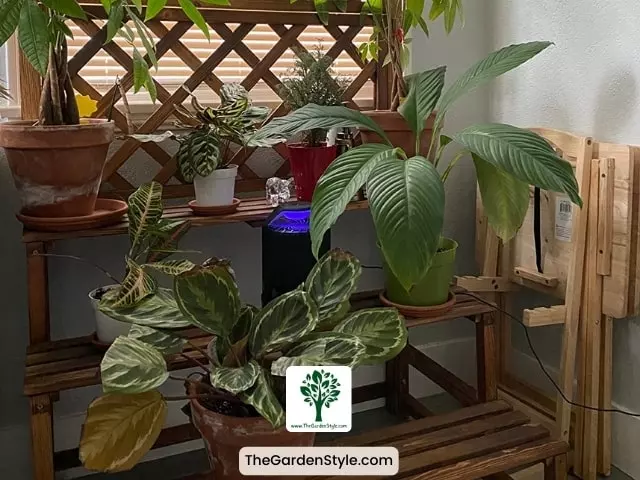
Save these pins for later so you can use this gardening guide on hand to effectively eliminate gnats from your plants.
